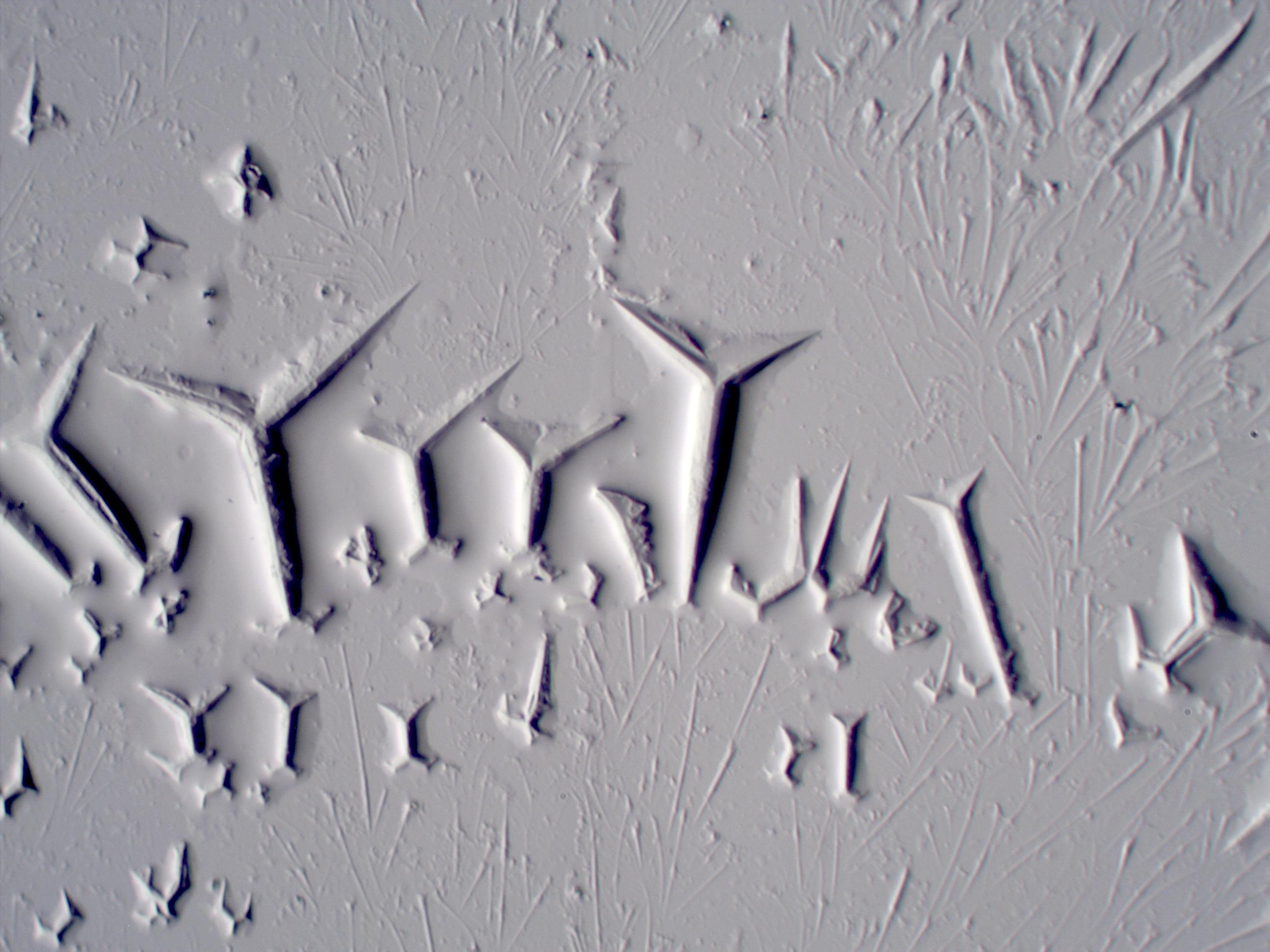Sodium Uranyl Acetate in the Presence of Sucrose
These tetrahedral skeletal crystals form if sodium is
present in a sucrose solution added to a uranyl acetate
solution. Sucrose interferes with the crystal growth on the face of the crystals.
The result is this skeletal form
Transmitted Oblique Illumination
Definition/Function:
These are characteristic crystals of Na(C2H3O2)-A
standard test for sodium is to test
the dry salt with a solution of uranyl acetate
(UO2(C2H3O2)-2H2O)
in water made acid with a little acetic acid. In this case the presence of sodium ions
in a sucrose solution was at issue. In the presence of
sucrose the crystal habit is slightly modified.
Significance in the Environment:
Characteristic Features:
Sodium Uranyl acetate has a relatively high refractive index and so may appear black due
to total internal reflection if
illuminated with transmitted, centered Kholer illumination. Transmitted oblique
illumination will allow some light to come
through on one or two of the crystal faces.
Associated Particles:
A number of other crystalline or non-crystalline phases may be present. A summary of the
elements that may cause these
other precipitates is given on page 57 and 58 of Chamot and Mason.
References:
Chamot, Emile Monnin and Clyde Walter Mason, HANDBOOK OF CHEMICAL MICROSCOPY, Volume II,
pp. 51-58, 1940.


